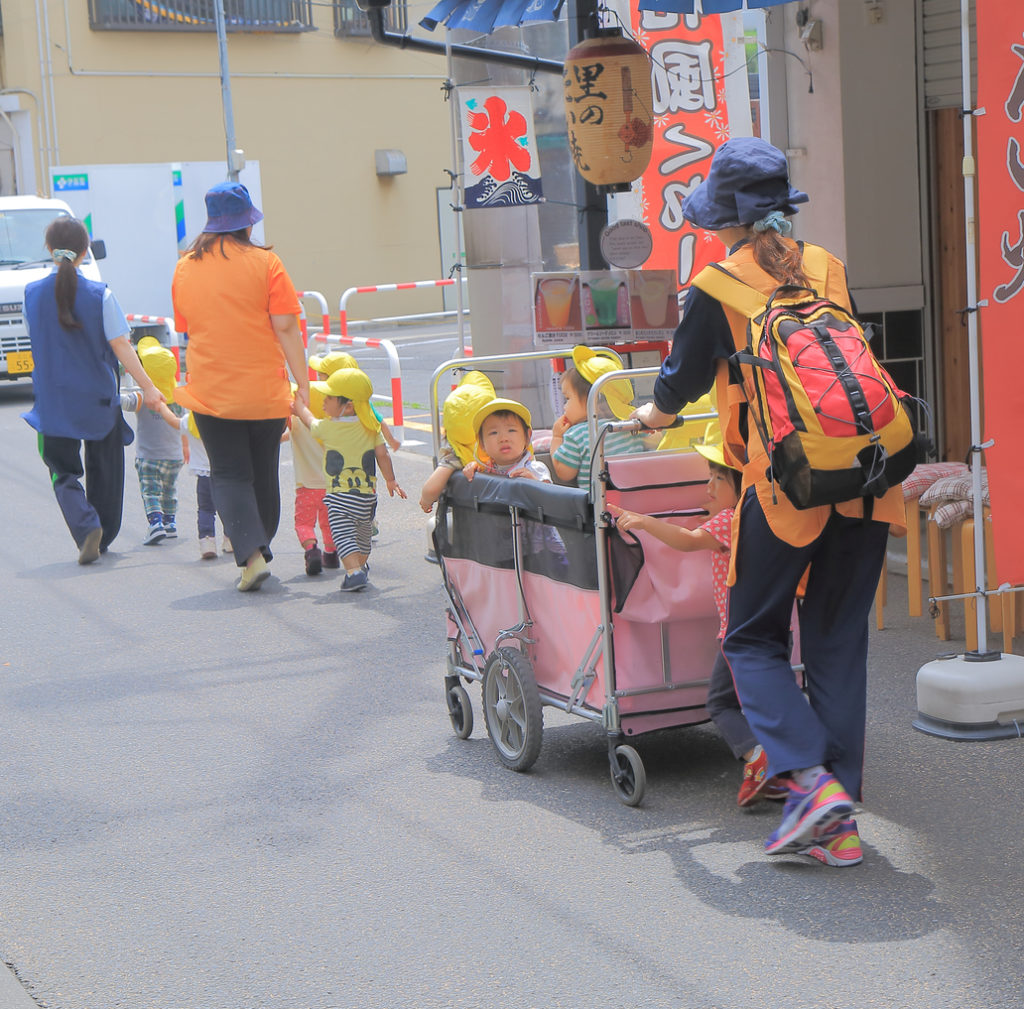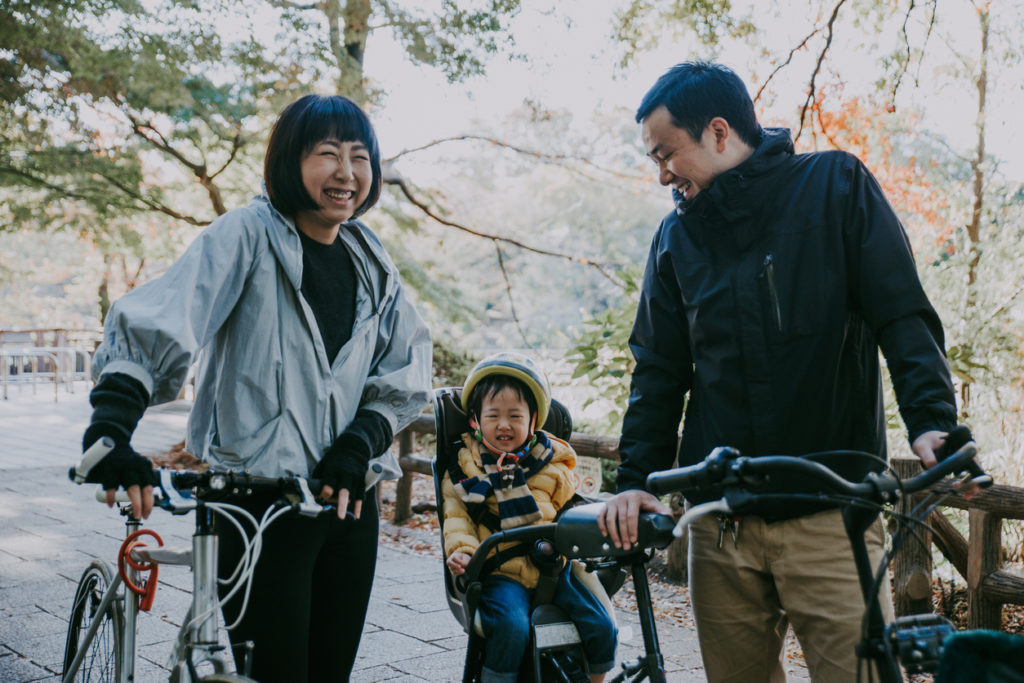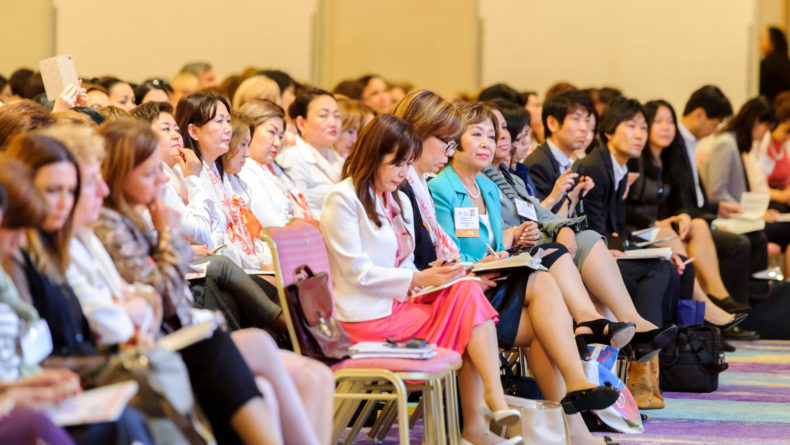Working Mothers In Japan: The More Things Change, The More They Stay The Same
With Women's Issues, It's Only Time That's Advancing
Japanese women have come a long way in demanding gender equality, but change is slow. And often the SOS signs are ignored.
Like many other women, the recent news about Tokyo Medical University’s discriminatory practice of limiting the number of successful female applicants made me furious. Using the excuse that female doctors “tend to take long absences or quit after marrying or giving birth,” since 2010, university officials in charge of entrance exams have been covertly cutting scores to artificially limit women to around 30 percent of those admitted each year.
This news hit very close to home for two reasons: Firstly, I know the associated Tokyo University Hospital well, as my husband spent a month there last autumn for a major surgery. I remember seeing groups of young medical residents walking around and, at the time, noting that only about one in three or four was a female. Secondly, my older daughter is in her third year of medical school in New Zealand.
This kind of practice has repercussions all through the system. Fewer female medical students translates to fewer women advancing to management roles within a hospital or medical university. If female doctors tend to take extended leaves of absences or quit after marriage and giving birth, then it means — nothing more, nothing less — that the system itself is flawed. And forging women’s test results won’t solve anything.
街角で女性に料理を作らせる番組。課題の料理が作れない女性を、スタジオで笑ってるおじさんたち、作れるんですか?なぜ女性だけにやらせるのか?モテコーデ対決の番組。女性はモテるためにファッションを気にするという価値観の押し付けです。こういう価値観の押しつけにうんざりです#怒りの女デモ pic.twitter.com/m1BiH3KQRL
— 怒りの女デモ (@womenrights_45) August 22, 2018
Women protest at Kawasaki station on August 22 following the news that Tokyo Medical University has altered women’s test scores to keep successful applicants at under 30 percent. The women gathered through social media with a hashtag #AngryWomen’sDemonstartion.
A vicious cycle
This is just one example—albeit, a particularly distasteful one—of how working women, and working mothers, in particular, can’t seem to catch a break. Everyone knows that Japan’s birth rate is dropping while the population is aging rapidly, meaning that there are fewer young working people to support the elderly. To this end, the Japanese government wants women to work more and have more children, but it lacks any concrete plans of how to create an infrastructure and work culture that encourages both these trends.
Even though young Japanese women are increasingly well-educated (59 percent of women in the 25-to-34 age group have college degrees versus 52 percent of men), Japan still has one of the lowest number of corporate board members among OECD countries—less than five percent.
The Japanese government wants women to work more and have more children, but it lacks any concrete plans of how to create an infrastructure and work culture that encourages that.
Failure to address — and understand — core issues
While Prime Minister Shinzo Abe’s government has promised various measures to support women, the reality hasn’t been very encouraging so far. The government, along with corporations and the media, seem to be missing the mark on three key issues when it comes to working mothers in Japan.
The first of these is to focus mainly on the very early stages of child raising, i.e. pregnancy, birth and infancy. There is a drastic need to increase government-funded daycare—in order to enable more mothers to work and encourage younger working women to consider having kids.
In April this year, the Ministry of Health, Labor and Welfare announced that as of October 2017, Japan had a total of 55,433 taiki jidou children on the waiting list for public daycare. That was an increase of 7695 from the same period in 2016, and an increase for a third consecutive year. Until every child can have a secure spot in a daycare facility that won’t have their parents pay one month-worth salary, the problem will not be eradicated.

Japan’s daycare shortage results in the rise of taiki jidou children who are put on the waiting list for public daycare.
Japan’s public daycare (hoikuen) is wonderful if you can get a place for your child, as I found when two out of my three kids eventually got in. However, childcare issues don’t miraculously end when a child leaves daycare and starts elementary school. While daycare is set up to support working mothers as much as possible, Japanese elementary school certainly is not. A lot of the activities and meetings where a parent’s presence is encouraged (read: expected) fall slap-bang in the middle of a weekday. Public afterschool care—generally known as gakudou—does exist, but in many places in Tokyo, it only caters for children up to the end of third grade.
And while most support is currently given to parents with younger children, older kids’ need for attention and care shouldn’t be neglected either.
While an older elementary school child—or middle school-aged child for that matter—may be fine spending a few hours alone after school, they are still children. Teenagers, especially older ones, don’t require a parent’s physical presence very much — after all, they are busy with after-school clubs, cram schools, friends and even part-time jobs. But “big kids” still need time with their parents. Teenagers won’t tell you about their day or their problems on your terms. You have to be around to catch them when they are ready to talk. So if a full-time working mom is expected to put in typical long hours of overtime because her kids are “big,” then precious opportunities for parent-child interaction are lost.
So, it isn’t just simply an issue of “build more daycare centers and women will work”— raising kids is a much longer-term project and should be supported all the way.
Failure to understand that raising children is not a women-only issue

The second thing that always leaves me rolling my eyes is how giving birth and raising children is almost always couched in terms of an issue for women/mothers.
Today’s younger generation of men seems more willing to be hands-on, and I often see dads taking their preschoolers to hoikuen in the morning. However, while Japan has laws in place to provide for paternity leave (legally, every father is entitled to it), only around 3 percent of fathers actually take it, and, according to a survey by the Ministry of Health, Labor and Welfare, the leave usually lasts for around 10 days. In a business culture where senior male management are probably used to delegating parenting issues to their wives, it is still hard for younger men to indicate that they would like to put their families first.
[O]nly around 3 percent of fathers take [paternity leave] in Japan.
In order to truly support families and encourage people to have kids in the first place, both women and men should be encouraged to leave work earlier and take paid leave. As long as this issue is not properly addressed, encouraged and executed in a way that parents can feel comfortable and relaxed to return to work, then nothing is really going to change.
Failure to understand that the current taxation system is built on old grounds

Japan places a great value on the role of the stay-at-home mother and it is seen as desirable for a woman to devote herself to her children, at least when they are small. Some of my foreign mom friends comment that they like this aspect of parenting in Japan, and feel grateful that they have the opportunity to stay home with their kids.
If someone wants to stay home by choice, I think that is great. However, the reality is that the current taxation and social insurance system discourage women from joining the workforce. In fact, it gives the opposite message—that you should stay home, or work in a very part-time capacity at best.
[T]he current taxation and social insurance system discourage women from joining the workforce.
Introduced in 1961, Japan’s taxation system is set up to support the full-time “salaryman” and dependent spouse model. At the risk of over-simplifying things, the government offers a tax break if the dependent spouse’s income is under 1.03 million a year, as well as covering health insurance and pension payments for the spouse if their income remains under 1.3 million annually. In other words, this means that a family in which one dependent person earns a little over ¥83,000 a month is entitled to those benefits. This is one of the major reasons why many women choose to opt for part-time jobs.
This system keeps wages artificially low for jobs typically filled by married women. It also hurts those who desperately need a decent living wage, such as single parents who are the sole provider for their family, and who must then often cobble together multiple jobs.
While there have been talks in recent years of changing things to better represent today’s young families, no government has yet had the courage to dismantle a system that has benefited the older generation—and loyal voters—for several decades.
Deja vu all over again
It has been 19 years since we moved back to Japan from a transfer in the USA, and I began life as a working mother here. Soon, my oldest kid will be entering the workforce himself. I think back to the issues facing mothers when my children were little: Fierce competition for daycare; mothers being expected to drop everything to attend school functions; a lack of decently-paid work and career opportunities for women who had taken time off to have kids; women shouldering the brunt of childcare and household tasks…
[N]o government has yet had the courage to dismantle a system that has benefited the older generation—and loyal voters—for several decades.
These are the same basic issues that younger working mothers are still facing today. I had hoped things would be easier by the time my daughters enter the workforce, but I’m not holding my breath. I miss my older daughter like crazy, but for now, I’m actually glad that she looks set to start her career abroad.
Are you a working mother in Japan? What are your most pressing needs and how do you manage to balance work and child-rearing? Share your story with us.
















Leave a Reply